INTRODUCTION
Organisation behaviour is a study of individual behaviour with in a work place as well as their interaction within a group thus help to enhance effectiveness and efficiency of a firm at market place. Theory of organisation behaviour used for get maximum outputs of human efforts. In this report select Primark that is an Irish accessories and clothing firm and their parent company is AB Foods. Primark was established in the year of June 1962 by Arthur Ryan and around 325 store has run in almost 11 countries in 2016. In this assignment covers firm politics, power, culture influence individual behaviour in team and behavioural theories. It also includes development of effective team (Ng and Feldman, 2012).
TASK 1
P1 Role of company cultural, power and politics in team member's performance
In an organisation there are several kind of environmental issues affect individual performance positively as well as negatively. It is a management responsibilities to manage all these function effectively so that they are able to enhance team members performance in long run thus help to Primark to achieve their goals and objectives in limited period of time.
Organisation culture:It can be define as a way through which individual has perform their job effectively and interact with other employees. It covers morals, believes, values that govern all operating style of staff members. A part from this, Handy's culture theory help to develop healthy firm culture that has explain in detail as follows:
- Power culture:Power are distribute according to individual job role and responsibilities at work place. There are some rule and regulations thus directly effect working task thus help to control team members behavioural and achieve goals in limited time period (Punjaisri and Wilson, 2011).
- Task culture: Primark has used this method of culture in which they are assigning task to individual according to their capabilities. In this power has automatically shift in whole team members and they have right to take decision to complete work effectively.
- Role culture: It is depend on strict regulations as well as rules these all are highly controlled by management of Primark. Thus help enterprises to operate business activities effectively in long run.
- Person culture:All staff members has treated as unique as well as superior so that they feel motivated and enhance their productivity in long run resulted by appropriate training method organisation achieve aim effectively in given time frame.
Organisation Politics: There are several different type of individual those work to gather in order to achieve goals and objectives. Organisation politics can be define as variety of activities which are associated with tactics those are influences person interest in their work place. There are several kind of politics like wood, high ground, weeds and rocks all these have has apply in different situation so that individual has react according to their behaviour. For example, Primarke employees with rock power has interact with formal sources of administration such as access to resources, role, expertise and many more (Solomon, Russell-Bennett and Previte, 2013).
Organisation power: Each one individual has their own role and responsibilities accordingly firm has distribute power among all staff members thus help to take decision effectively in order to complete task on time. There are various kind of firm power has effect employees performance some are explain as follows:
- Expert power:Knowledge is important to complete work effectively and organisation have subjects expertise so that they help works when they required. Parimark has organising on the job training program in which superior has trained employees by their knowledge sharing resulted new staff work effectively (Tierney and Farmer, 2011).
- Referent power: It is derived by interpersonal relationship in which individuals cultivates with another employees with in Parimark. It should be share by other person in order to complete work effectively.
- Coercive power:It is derived by individual ability to influence another staff members via punishment, sanction and threats. Coercive power help to control behaviour of all workers by ensuring that they match with firm policies as well as norms.
M1 Critical analysis of culture, politics, power which are influence team members behaviour as well as performance
Human resources manager of Primark has selecting candidate but before it they are analysis organisation culture, politics and power so that they are able to select right application those are able to achieve goals in given time frame. According to Alejandra Gonzalez-perezand Leonard (2013), these all factor manage by management which are effect individual performance as well as behaviour positively.
TASK 2
P2 Theories of motivation
Motivation is a very important for success as well as growth of any enterprise. Each organisation want higher productivity and performance within the firms. In this context, company have to adopt some policies which aid in retaining and attaining workers for a long time. It is essential for supervisors to concentrate on coordinating their workers for gaining better results within a limited period of time. Hence, supervisors have to adopt some theories which stimulate workers for accomplishing their work in an effective way. Some of motivation theories are given below (Alfes and et. al., 2013):
There are two type of motivational theory which are explain as follows:
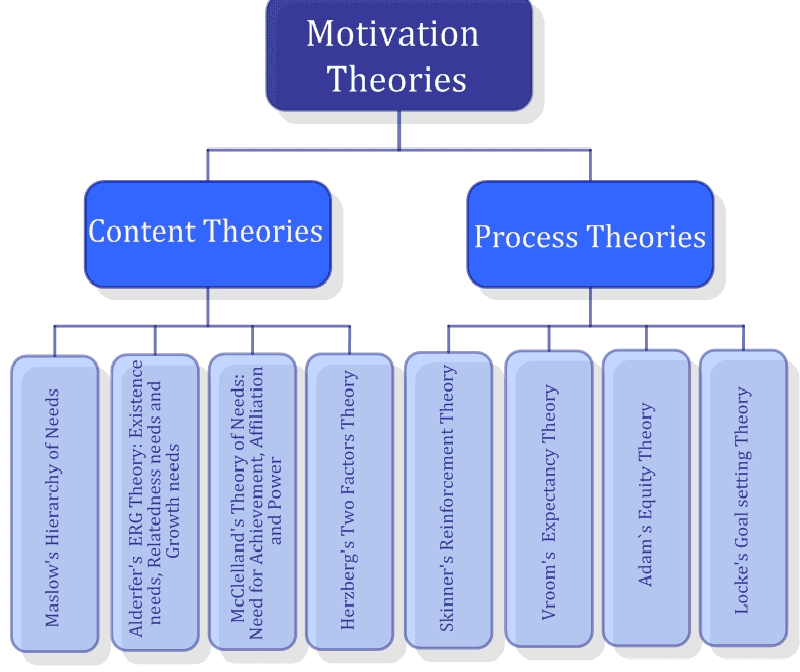
(Source: Theories of motivation, 2017)
Content theory
The theory is based on various motivation concepts. Concept theory are traditional theories; it help in satisfying wants and needs of employees for getting best results. Some of various kinds of content theory are given below:
- Maslow's need hierarchy –As per this theory, employees will be encouraged by satisfying of their requirements. In this, it is presented at a high level requirements to low level requirements of employees. Management has to analysed the requirements to each level for satisfying them. Theories five divisions for motivating employees are given below:
Psychological needs-It include basic requirement. For example: Shelter, Air, food, water etc. These needs are called as common amenities of particular life (Bergeron and et. al., 2013).
Safety needs-It include emotional and physical protection, environmental or safety. Individual common safety are – family security, job security, financial security etc.
Social needs-It consists the requirements of belongingness, friendship, care, love etc.
Esteem needs-It involves status, attention, power etc.
Self actualisation-It this employees have requirements to satisfy them in an proper way.
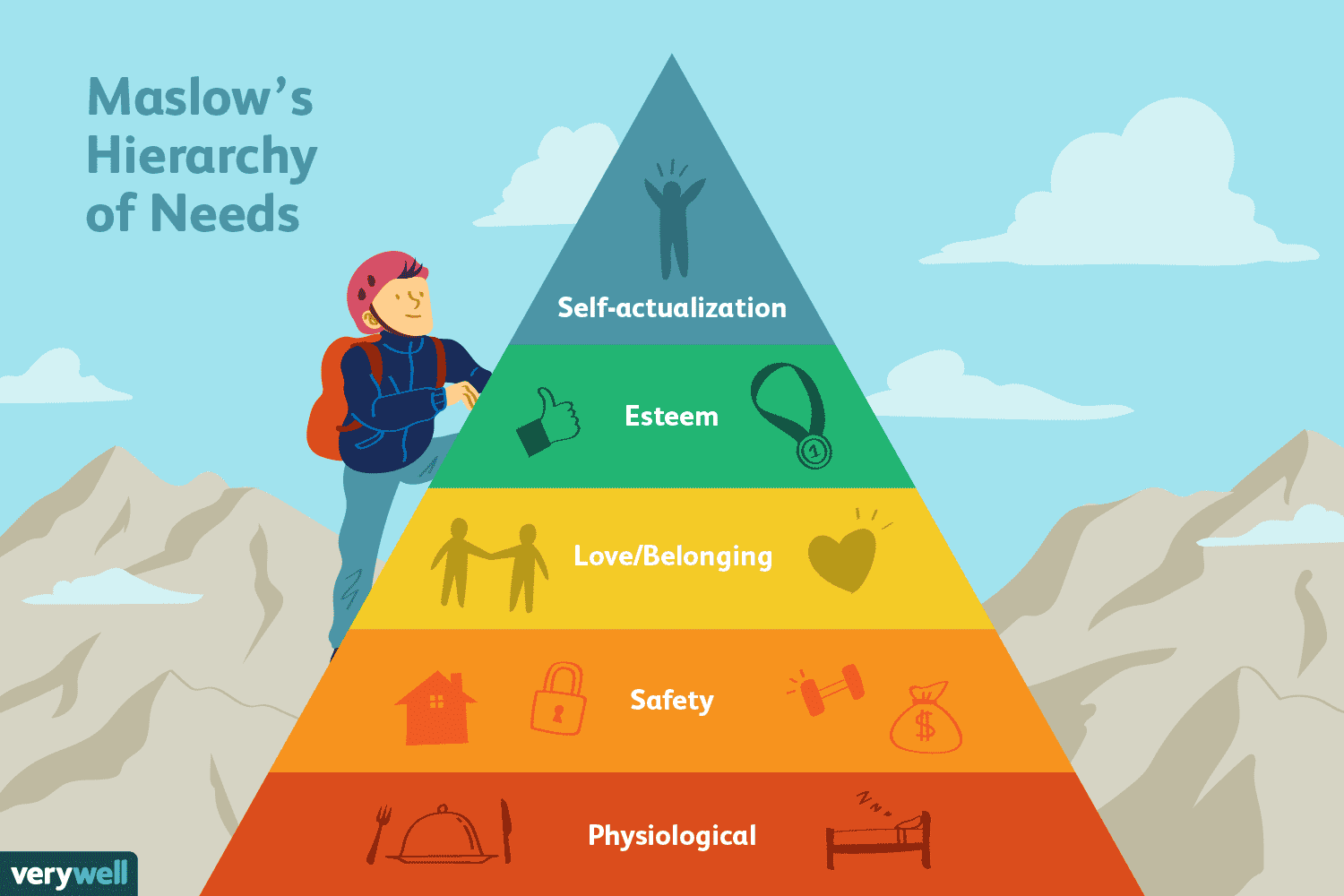
Illustration 2: Maslow's theory, 2017
(Source: Maslow's theory, 2017)
Alderfer ERG Theory– This theory is divided into classes of requirements are: Existence, relatedness and growth. Both Alderfer and Maslow had tries to explain these requirements, these stages are less or more essential to particular person. In this it involve (Bushra, Ahmad and Naveed, 2011):
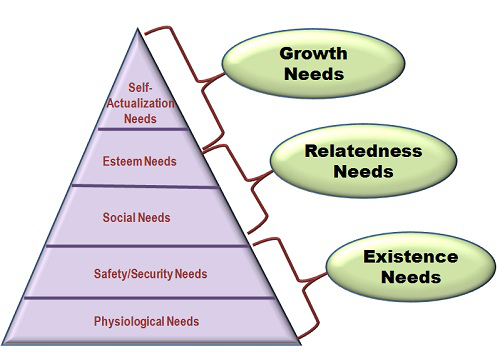
Illustration 1: Alderfer ERG Theory, 2017
(Source: Alderfer ERG Theory, 2017)
Existence: It consists an particular person physiological as well as requirements of physical safety.
Relatedness: In this significant relationship of belongingness and love.
Growth: Require advancement form together needs, personal growth and self development.
X factor and Y factor theory– As per this theory X and Y, supervisors perception for their employees are depend on various prediction.
Theory X: It shows pessimistic employees points of view at workplace.
Theory Y: It concentrate on reasonable and valid outcomes. It motivate group cooperation and cordialness (Chiang and Hsieh, 2012).
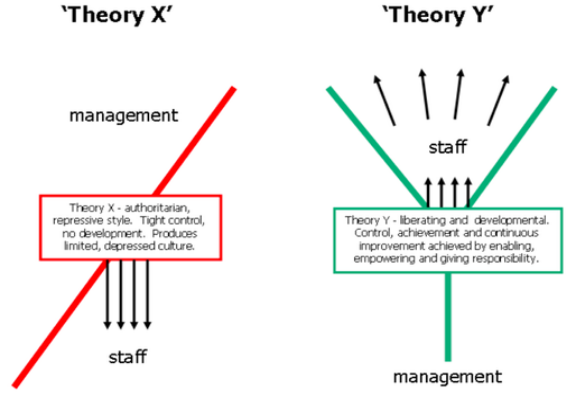
Illustration 2: X theory and Y theory, 2017
(Source: X theory and Y theory, 2017)
McClelland theory– They dominant encourage depend on life experience and culture. It involve three motivators are (Gold and et. al., 2013):
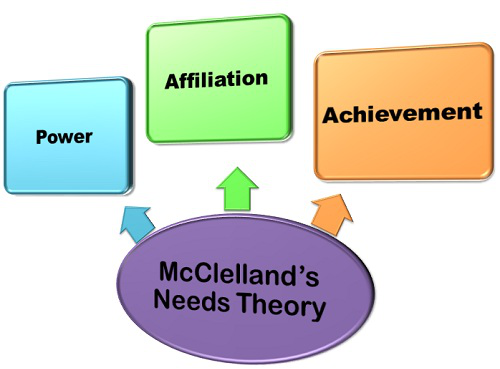
Illustration 3: McClelland theory, 2018
( Source: McClelland theory, 2018)
Achievement: Requirements to demonstrate and accomplish mastery.
Affiliation: It needs for relatedness, belonging and love.
Power: It require for control on their own task.
Process theory
Process theory means that the process of internal should be effective for accomplishing any goods. Mainly, this term diminish production problems within working environment. Some of various kinds of process theory are (Gulliford and Morgan, 2013):
Vroom expectancy theory: It means that it is a process of motivation that governs our choices within various forms of voluntary behaviours. Their are three factors are:

Illustration 4: Vroom expectancy theory, 2017
(Source: Vroom expectancy theory:,2017)
Expectancy theory – It concentrate on making expectations as per future results and performance and outcomes.
Instrumentality– This theory is based on workers assumptions and then compare with common working conditions.
Valence– In this, management require to set some objectives and goals for each person and they can meet them within a time (Hildebrand and Bhattacharya, 2011).
M2 Critically evaluate how individual behaviour influences
There are various kinds of motivational theories, like as- process and concept theories. In this, it include Maslow's requirement hierachy, herzberg's motivation theory and X and Y factor. In other side of process theory involve vroom expectancy theory. Through all these theories supervisor can satisfy wants and need of workers and can achieve better results.
TASK 3
P3 Effective as well as ineffective team
Team can be define as group of individual who have worked together in order to achieve goals and objectives in limited period of time effectively. Primark has develop creative technique of team building through this all members are make strong relationship and achieve predetermine target in given time frame. There are two kind of team are working effective as well as ineffective
- Effective team:Positive relationship between team members thus help to build strong communication network with in group, better understanding, work together, sharing information so that work are completing on time effectively and many more. Management of Primark has implemented effective team strategy at their work place in order to operate whole business activities effectively (Lee and et. al., 2011).
- Ineffective team:In this team lack of consideration and understanding should be developed among members and due to this they are not sharing knowledge, information, data to others at work place.
Effective as well as ineffective team are depend on management decision, how they are build team and manage as well as control them in order to get aim appropriately. So that, human resources manager of Primark has develop strategies for building effective group for this they motivating members to make positive relationship with other employees so that all individual know each other and work together without any conflicts. There are several kind of team are working together at work place in order to achieve common goals in limited time period. Some team are detail as follows (Martin and Burke, 2012):
- Functional team:They are work for specific target of firm department. These has associated with management and workers of Primark that are control and organising each one member role with in team. These are consist four people in it document controller, record keeper, team leader, progress chaser which are perform whole function effectively.
- Problem solving team: Primark has develop team that work is identify issues at work place or store and analysis alternative solution of it in order to run whole firm activities effectively. Problem are related to internal environment so that it eliminated from other division of Primark.
- Quality team:They are analysis each one staff members performance and identify whether there is any gap between actual as well as desire performance. If any, then organise training program in order to enhance quality of team members performance in front of Primark customers (McEvily and Tortoriello, 2011).
M3 Analysis relevant team development theory
Tuckman's team development model (Tuckman Model,2014) :
|
Norming: Employer allocated role and responsibilities which are help to take right decision by taking opinion of team members. |
Storming: Opinion of team members are very important and leaders has take judgement of all group members in order to completing task effectively and achieve target. |
|
Performing: With out leaders, team members are know what is their role and duties at work place. |
Forming: All team members are fully depend on team leaders and its direction, they are not able to achieve goals with out taking help of leaders. |
CONCLUSION
From the above report it is concluded that human resources manager has play important role in development of organisation behaviour through which Primark are able to manage all team members effectively. They implementing motivation strategies at work place in order to motivate individual through this Primark are capable to enhance performance as well as productivity effectively. Management has develop effective team that help to make positive culture, politics and distribute power accordingly.
Visit the sample section of our website and enjoy more such informative write-ups written by our online assignment help professionals.
REFERENCES
Books and Journals
- Alejandra Gonzalez-perez, M. and Leonard, L. eds., 2013. International business, sustainability and corporate social responsibility. Emerald Group Publishing Limited.
- Alfes, K. and et. al., 2013. The link between perceived human resource management practices, engagement and employee behaviour: a moderated mediation model. The international journal of human resource management. 24(2). pp.330-351.
- Bergeron, D. M. and et. al., 2013. Organizational citizenship behavior and career outcomes: The cost of being a good citizen. Journal of Management. 39(4). pp.958-984.
- Bushra, F., Ahmad, U. and Naveed, A., 2011. Effect of transformational leadership on employees' job satisfaction and organizational commitment in banking sector of Lahore (Pakistan). International journal of Business and Social science. 2(18).
- Chiang, C. F. and Hsieh, T. S., 2012. The impacts of perceived organizational support and psychological empowerment on job performance: The mediating effects of organizational citizenship behavior. International journal of hospitality management. 31(1). pp.180-190.
- Gold, J. and et. al., 2013. Human resource development: Theory and practice. Palgrave Macmillan.
- Gulliford, M. and Morgan, M. eds., 2013. Access to health care. Routledge.
- Hildebrand, D., Sen, S. and Bhattacharya, C.B., 2011. Corporate social responsibility: a corporate marketing perspective. European Journal of Marketing. 45(9/10). pp.1353-1364.
- Lee, L. and et. al., 2011. Entrepreneurial intentions: The influence of organizational and individual factors. Journal of business venturing. 26(1). pp.124-136.
- Martin, M. G. and Burke, R. J. eds., 2012. Corporate reputation: Managing opportunities and threats. Gower Publishing, Ltd..
- McEvily, B. and Tortoriello, M., 2011. Measuring trust in organisational research: Review and recommendations. Journal of Trust Research. 1(1). pp.23-63.
- Ng, T. W. and Feldman, D. C., 2012. Employee voice behavior: A metaanalytic test of the conservation of resources framework. Journal of Organizational Behavior. 33(2). pp.216-234.
- Punjaisri, K. and Wilson, A., 2011. Internal branding process: key mechanisms, outcomes and moderating factors. European Journal of Marketing. 45(9/10). pp.1521-1537.
- Solomon, M. R., Russell-Bennett, R. and Previte, J., 2013. Consumer behaviour: Buying, having, being. Pearson Australia.
- Tierney, P. and Farmer, S. M., 2011. Creative self-efficacy development and creative performance over time. Journal of Applied Psychology. 96(2). p.277.














